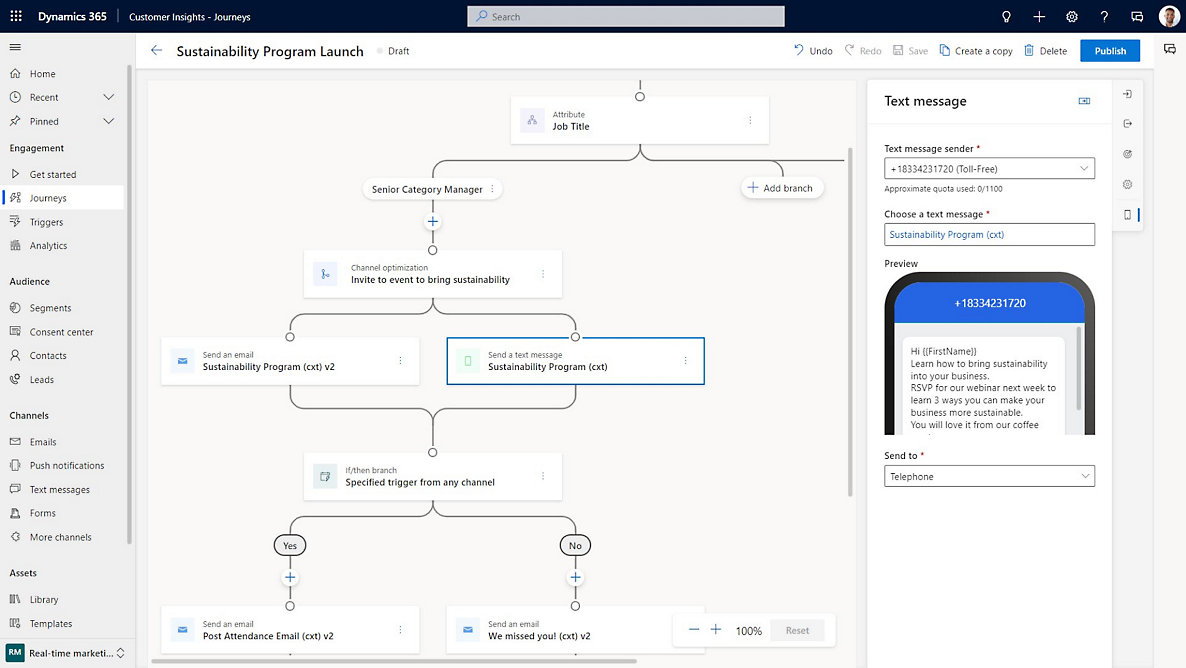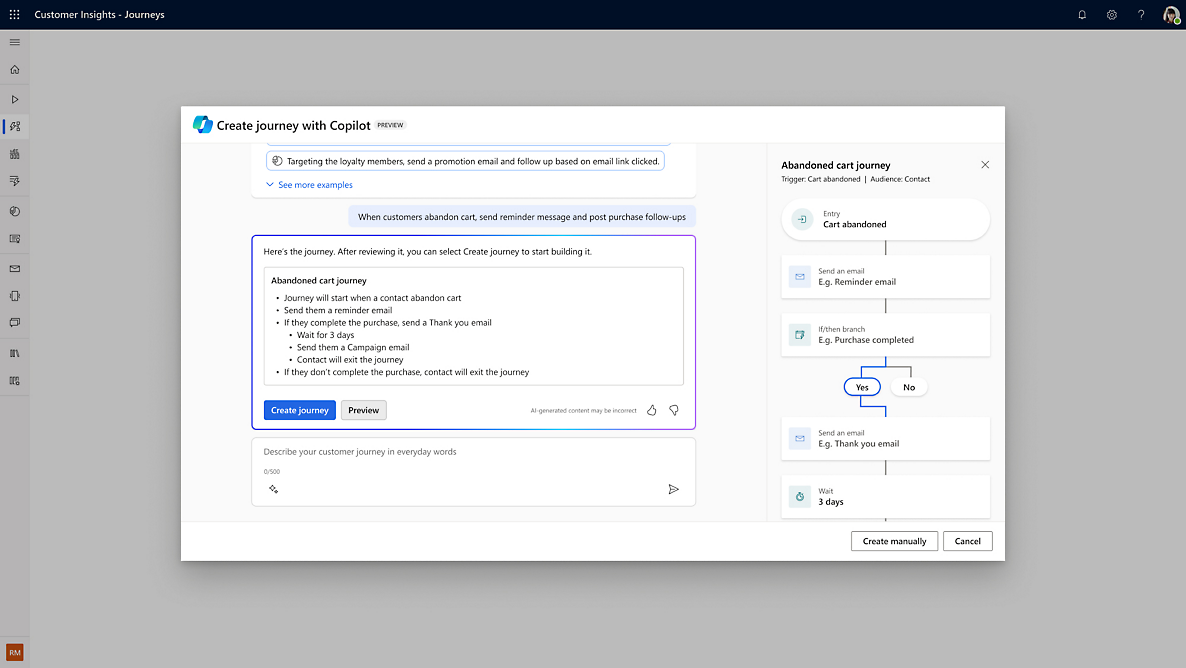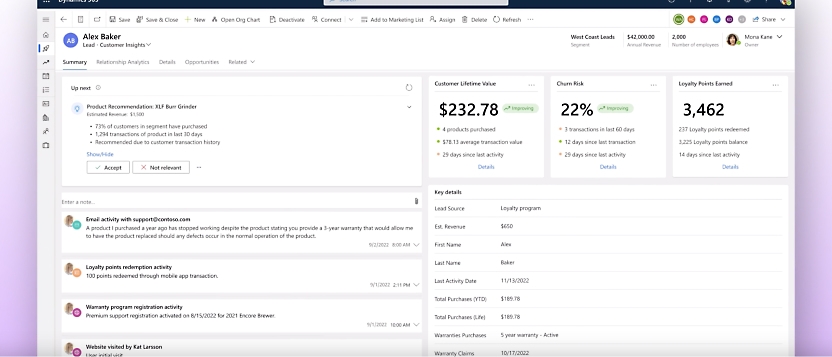

Overview
Deliver connected customer journeys
Understand your customers and create truly personalized experiences.
The Total Economic Impact™ of Microsoft Dynamics 365 Customer Insights
Explore the advantages of Dynamics 365 Customer Insights in this commissioned study conducted by Forrester Consulting.

Pricing
Start where you want, add what you need
Dynamics 365 Customer Insights
¤1,700.00
tenant/month, paid yearly
Price does not include tax.
Price does not include tax.
This product is not available in your market.

Partners
Discover Microsoft partners

Get started with consulting services
Get help with solution assessment, architecture planning, implementation, and training.

Explore Dynamics 365 partner apps
Extend and enhance your solution with prebuilt apps tailored to your industry or needs.

FastTrack for Dynamics 365
Go live confidently with onboarding and training led by Microsoft experts and partners.
Use cases
Connected customer experiences across teams
Marketing
Tailor real-time customer journeys and use Copilot to find new insights, create audience segments, and produce personalized content.
Sales
Empower sellers with real-time leads, enabling personalized interactions through AI-generated predictions and product recommendations.
Service
Identify customer issues proactively and provide service representatives with in-depth customer profiles that help route cases and resolve issues faster.

Customer stories
Real customers, real results

Resources
Find resources in your favorite formats


Next steps
Try Dynamics 365 Customer Insights
Deliver personalized, responsive, and connected customer journeys using built-in AI and analytics.
Request a call back
Have a Dynamics 365 expert contact you.















































Follow Dynamics 365